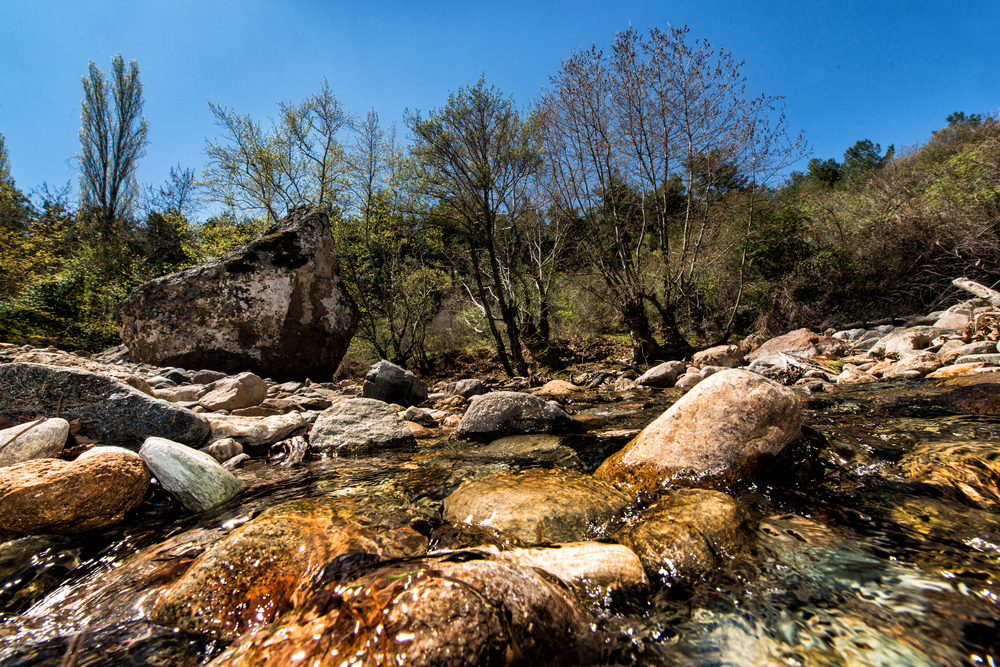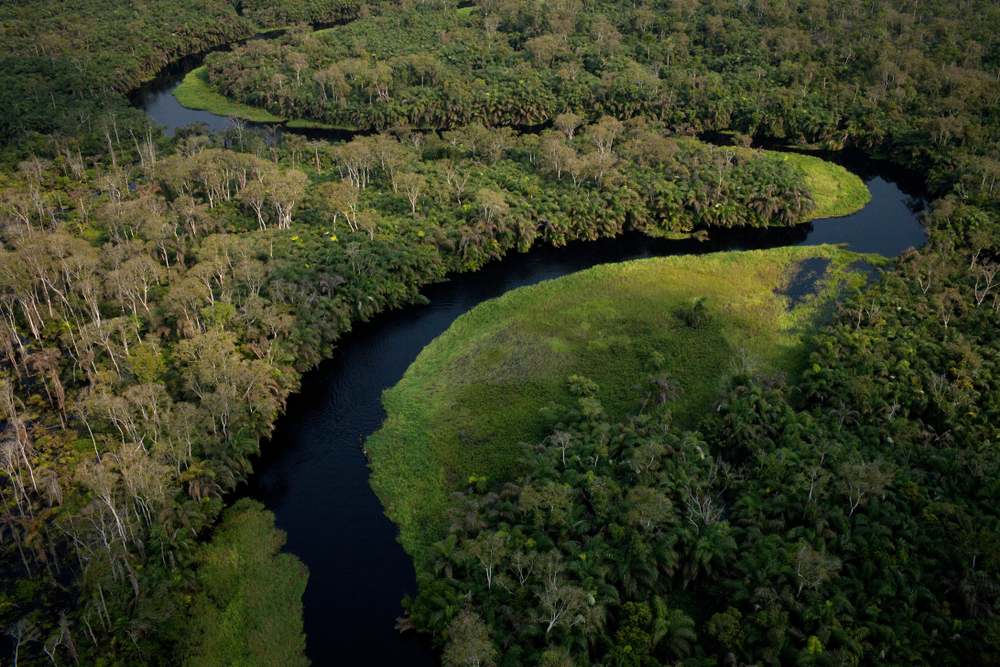forest

Share
Five reasons to celebrate forests
Trees may not seem like anything exceptional, but they perform a myriad of services that we rarely recognize.![]() From making cities cleaner and cooler, to providing economic lifelines to millions of people, trees and forests are central to our environment as we know it.
From making cities cleaner and cooler, to providing economic lifelines to millions of people, trees and forests are central to our environment as we know it.
Unfortunately, global forest loss is at an all-time high, and unless we act soon, we risk unprecedented (and possibly irreversible) ecological changes.
It’s time to stop taking forests for granted. On this International Day of Forests, take a minute to enjoy the trees in your environment and to appreciate just how important forests are around the world. Here are five reasons to celebrate forests:![]()
1. Higher incomes, more resilient communities
Across the world, trees and forests provide benefits to around 1.3 billion people, including as a source of food, timber, fodder, fuel, and habitat for biodiversity. A PROFOR study in five African countries found that trees on farms make up as much as 17 percent of rural households’ gross annual income. And in Lao PDR, research shows that villages with greater access to forests are less sensitive to climate change because they can to turn to forests for resources during hard times. Ongoing PROFOR work is exploring the ways in which forests might also provide pathways out of poverty.
2. More jobs
Global demand for wood is growing rapidly. By investing in the forest sector, countries can create good jobs, support local artisanship, and formalize timber markets so that wood is sustainably harvested, and natural forests are protected. In Colombia, a PROFOR-supported study estimated that the forestry sector could reach a production value of over $4 billion and create 35,000 permanent jobs in forest plantations and industries. Another study in the Congo Basin found that urban timber markets already generate USD $15 million annually and employ at least 5,000 people.
3. More productive and cost-effective agriculture
Far from crowding out crops, trees can often improve agricultural yields by improving soil quality and regular water availability. PROFOR research in Malawi found that, instead of subsidizing fertilizer, the government could save about $71 million every year by encouraging farmers to grow trees in their maize fields. And agroforestry is not just an option for small farms; private enterprises like Fazenda da Toca in São Paulo are proving that large-scale agroforestry is viable and cost-effective.
4. Lower risk of natural disasters
Forests are a critical regulating force for our environment. A PROFOR study in the Philippines showed that higher forest cover ensures a more reliable water supply during the driest months of the years, while reducing the volume of floodwater during the wettest months. Forests also stabilize hillsides by decreasing the risk of soil erosion, helping to reduce the impacts of landslides and other natural disasters. Compared to man-made structures like dams and, maintaining forests is a much more cost-effective way to provide these benefits.
5. A more stable climate
Not only do trees help to cool our immediate surroundings, but by storing carbon they reduce the impacts of climate change. Unless, of course, we fail to protect them. An ongoing PROFOR activity finds that the southern Amazon Forest is under such stress from droughts and fires that it might soon become a net emitter of carbon dioxide (CO2). The good news is that it’s not too late to start restoring a billion hectares of degraded forests worldwide. A recent report, funded by the Climate Investment Funds (CIF) and PROFOR, estimates that investing in forest restoration and increased use of wood products in six countries could result in more than 150 million tons of CO2 equivalent being sequestered.
For stories and updates on related activities, follow us on twitter and facebook , or subscribe to our mailing list for regular updates.
Last Updated : 06-16-2024

Understanding the Forest-Water Interactions in the Congo Basin
PROGRAM SUMMARY
The development objective of this project is to improve the understanding of forest-water interactions in the Congo Basin across World Bank project teams, client countries and climate scientists in Africa, and to strategize potential application to development programs and policies in the region. The analysis seeks to use emerging data and research to identify links between forest loss and degradation and water resources in the Congo Basin in the context of climate variability, covering impacts both locally and from a regional hydrologic cycle perspective.
CHALLENGE
The Congo Basin represents roughly 70% of Africa’s forest cover and is the second largest contiguous tropical forest in the world after the Amazon Basin. The Congo Basin provides many ecosystem services (carbon and non-carbon) but the forests are under pressure from economic activity such as logging, agriculture, energy, transport, and mining, and satellite-based data show that annual rates of deforestation have doubled since 1990 (World Bank 2013). Climate change is predicted to impact the Congo Basin significantly: since the 1950's, the region has experienced a 1°C increase in mean annual temperature (Niang et al. 2014; Fuller et al. 2018); by the 2080's, climate models suggest temperatures will increase 3 to 5°C and precipitation will decrease by 40% (Fotso-Nguemo 2016).
Understanding the impacts of forest loss within the Congo Basin and regionally is limited due to limited information on the linkages between forest loss and environmental services in the Congo Basin, particularly of the role of the forest in generating rainfall both locally and regionally. While much of the research related to the impact of tropical forests on rainfall and temperature has been undertaken in the Amazon, the few studies that have been conducted in the Congo Basin indicate that the region is a major source (17%) of moisture for West Africa (Cadet and Nnolli; Gong and Eltahir). One study estimates that the rain forests of West Africa may account for 30-40% of the annual rainfall in the Ethiopian highlands (Ellison 2018). Others suggest that the main source of rainfall in the Congo Basin is evaporation from the Great Lakes and that the Congo forest basin in turn generates much of the rainfall not only in the Congo basin (75-95%) (Brinkman 1983 in Job 1994) but also in the Sahel (van der Ent et al. 2010). At the same time, the drying trend in the Basin suggested by some scientific papers (Zhou et al. 2014) may impact this “water pump” service it provides. Such impacts are well described for the Amazon, where scientists have warned of an “Amazon dieback” or “savanization” of the Amazon (Vergara and Scholz 2011).
APPROACH
- The activity expanded the available evidence base through the production of an innovative online, interactive e-book. This e-book/knowledge portal houses both a data and analytics portal for the Congo Basin across numerous social, economic, and environmental themes; and a knowledge portal containing relevant literature, reports, investments, videos and programs in the Congo Basin.
- Community of Practice Formed. The team held numerous consultations (both in-person and virtually) with Bank teams working within the region, relevant academic experts, donor and other organizations. The CoP distribution list developed had over 200 people and is expected to be useful for the future as well.
- Two global virtual discussions undertaken. The first discussion session was held in September 2019 with over 50 participants; a smaller, more focused session was held in December 2019 with about 20-25 participants.
For stories and updates on related activities, follow us on twitter and facebook , or subscribe to our mailing list for regular updates.
Last Updated : 06-16-2024








